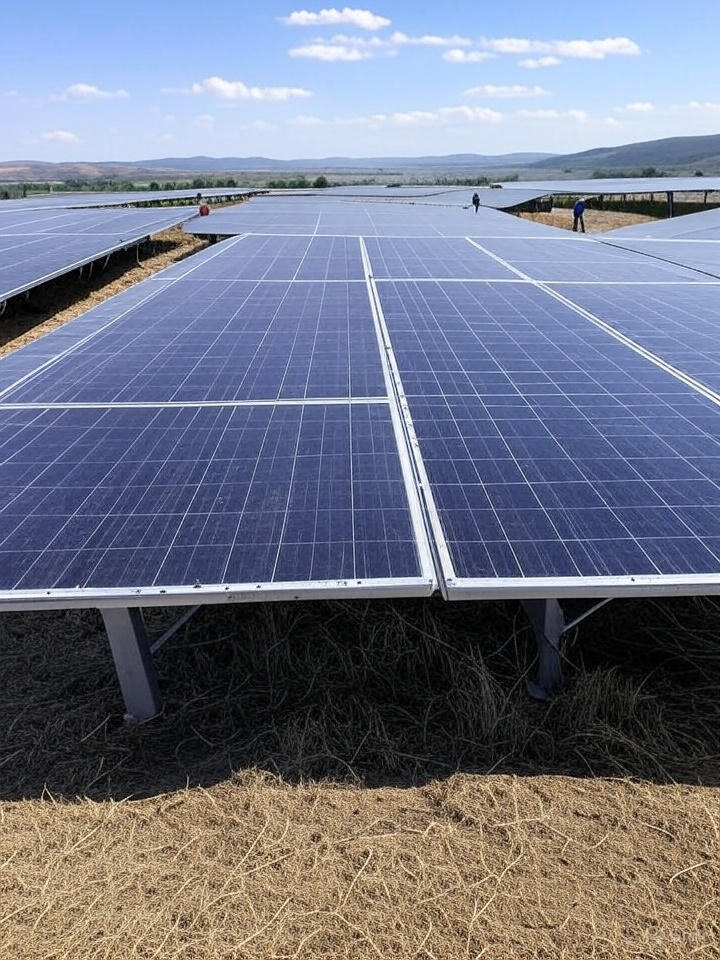Harvesting the Sun: The Wild Turkey Solar Project and a New Era for Houston County
Nestled within the rolling landscapes of Houston County, Minnesota, a new kind of harvest is being proposed—one that gathers energy from the sun. The Wild Turkey Solar Project, a proposed 5-megawatt (MW) solar photovoltaic (PV) facility, represents a significant step forward in the region’s clean energy transition. Located on a specific parcel in the Town of Caledonia, this project is a carefully considered development that balances the generation of renewable power with a commitment to minimal environmental disruption and tangible community benefits. By repurposing previously disturbed agricultural land and integrating seamlessly into the local electrical grid, the Wild Turkey Solar Project stands as a model for thoughtful, community-scale renewable energy development.
Project Location and Site Characteristics
The project’s location is precisely defined: the Southwest Quarter of Section 35, Township 102 North, Range 6 West. This legal description places the project within a well-established agricultural zone. A critical aspect of the project’s planning is its strategic siting. The chosen parcel is not a pristine, undisturbed ecosystem but has been “previously disturbed for agriculture activities.” This means the land has a long history of human use, typically for crop cultivation or pasture. Siting renewable energy projects on such previously altered land is a best practice in sustainable development, as it prioritizes the use of land that has already been impacted over the conversion of natural habitats or prime farmland.
The site’s physical characteristics further contribute to its suitability. Described as a “flat, open field,” the terrain requires minimal grading. This is a crucial environmental and economic advantage. Extensive grading operations can lead to soil erosion, sediment runoff into nearby waterways, and significant disruption to the local topography. The minimal need for such activity at the Wild Turkey site reduces the project’s construction footprint, shortens the development timeline, lowers costs, and mitigates potential environmental impacts. The disturbance will be confined to a clearly defined “approximately 36-acre Project area,” ensuring that the impact is limited and contained.

Technology and Infrastructure
At its core, the Wild Turkey Solar Project will utilize solar photovoltaic technology. This involves the installation of thousands of solar panels (modules) that convert sunlight directly into electricity. These panels will be mounted on grounded racking systems, strategically angled to maximize exposure to the southern sun. The facility will include other necessary components such as inverters (which convert the direct current (DC) produced by the panels into the alternating current (AC) used by the grid), a collection of electrical combiners, and a substation to step up the voltage for transmission.
A pivotal element of the project’s feasibility is its interconnection agreement with MiEnergy Cooperative. This agreement is the legal and technical blueprint that allows the solar facility to safely and reliably deliver its generated electricity to the wider power grid. The project will connect to an existing “pole-mounted 12.74 kilovolt distribution line along S Prairie Dr.” Utilizing existing infrastructure is another significant advantage. It avoids the need to clear new rights-of-way for lengthy transmission lines, which can be environmentally disruptive and costly. This “interconnect-at-the-fence” approach demonstrates a pragmatic and efficient strategy, minimizing visual and ecological impacts on the surrounding community while leveraging the existing grid’s capacity.
Environmental and Community Impact Assessment
The development of any energy project necessitates a careful evaluation of its potential impacts. The Wild Turkey Solar Project, by its design and location, inherently mitigates many traditional concerns associated with larger-scale developments.
Land Use and Ecology: By using a 36-acre parcel of previously disturbed agricultural land, the project avoids contributing to urban sprawl or the conversion of sensitive natural areas. During operation, the fenced solar array will effectively create a zone of undisturbed land for 25-30 years. This period of quiet can allow for soil recovery, the re-establishment of native grasses and pollinator habitats under and around the panels, and provide a sanctuary for ground-nesting birds and other small wildlife. Many modern solar projects actively seed these areas with pollinator-friendly plants, creating ecological benefits that extend to surrounding farmland.
Water Resources: Unlike traditional power plants, solar PV facilities require no water for electricity generation. This represents a massive conservation benefit, preserving local aquifers and surface water resources. Stormwater management plans will be implemented during and after construction to control runoff and prevent erosion, ensuring that the project protects local water quality.
Economic Benefits: The project will provide direct economic benefits to Houston County and the Town of Caledonia. These include:
- Landowner Lease Payments: The landowner will receive stable, long-term lease payments, providing a drought-resistant and reliable source of income that diversifies the agricultural economy.
- Local Tax Revenue: The project will significantly increase the property tax base, generating new revenue for local governments. These funds can be allocated to public services such as schools, road maintenance, and emergency services, benefiting all residents without directly raising tax rates.
- Local Jobs and Spending: While construction is temporary, it will create jobs for local laborers, electricians, and equipment operators. Furthermore, construction crews will patronize local businesses, including hotels, restaurants, and supply stores, providing a short-term economic boost.
Grid Reliability and Energy Independence: By generating power close to where it is consumed, distributed generation projects like Wild Turkey enhance local grid reliability and reduce transmission losses over long distances. This contributes to a more resilient and modern energy infrastructure for MiEnergy Cooperative’s members.

Visual and Sound: The primary potential impact for nearby residents is the change in viewshed. A flat, open field will be replaced with rows of solar panels. While some may view this as industrial, others will see it as a symbol of progress and sustainability. Modern solar projects are designed with low-profile mounting systems to minimize visual intrusion. Additionally, solar facilities operate silently, generating no noise pollution, a stark contrast to fossil fuel power plants.
The Path Forward: Due Diligence and Community Engagement
The brief project description outlines a well-conceived plan, but the path to completion involves rigorous due diligence. The applicant will need to navigate the local permitting process, which will include detailed studies on topics such as geotechnical engineering, archeological and cultural resources screening, and finalizing stormwater and erosion control plans (potentially requiring a permit from the Minnesota Pollution Control Agency).
Ongoing, transparent community engagement remains paramount. The applicant should host open houses, present at town board meetings, and establish clear channels for communication to address questions from residents. Addressing concerns about property values, decommissioning plans, and the long-term vision for the site is essential for building the social license to operate.
Conclusion
The Wild Turkey Solar Project is more than just an array of panels on a field; it is a forward-looking investment in Houston County’s future. It exemplifies a sustainable model for energy development by repurposing underutilized land, integrating with existing infrastructure, and generating significant local economic benefits without consuming water or producing emissions. By powering hundreds of local homes with clean, renewable energy, the project positions the community at the forefront of the energy transition. As Minnesota and the nation strive toward a cleaner grid, the Wild Turkey Solar Project offers a compelling vision of how rural communities can actively participate in and benefit from this change, cultivating a new, sustainable harvest from the power of the sun.




